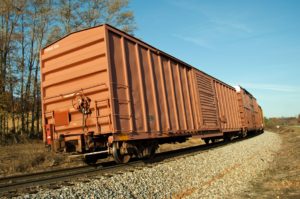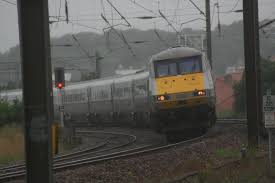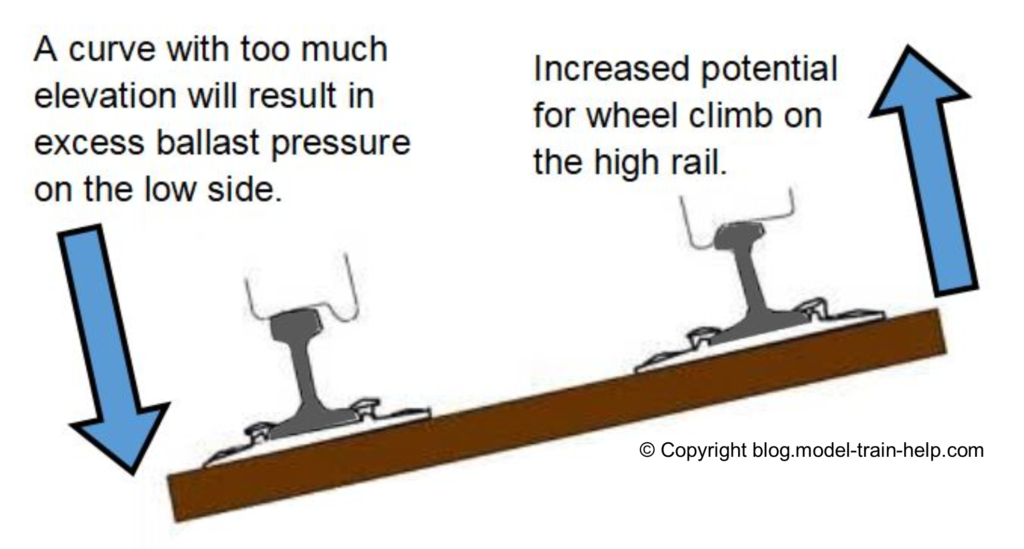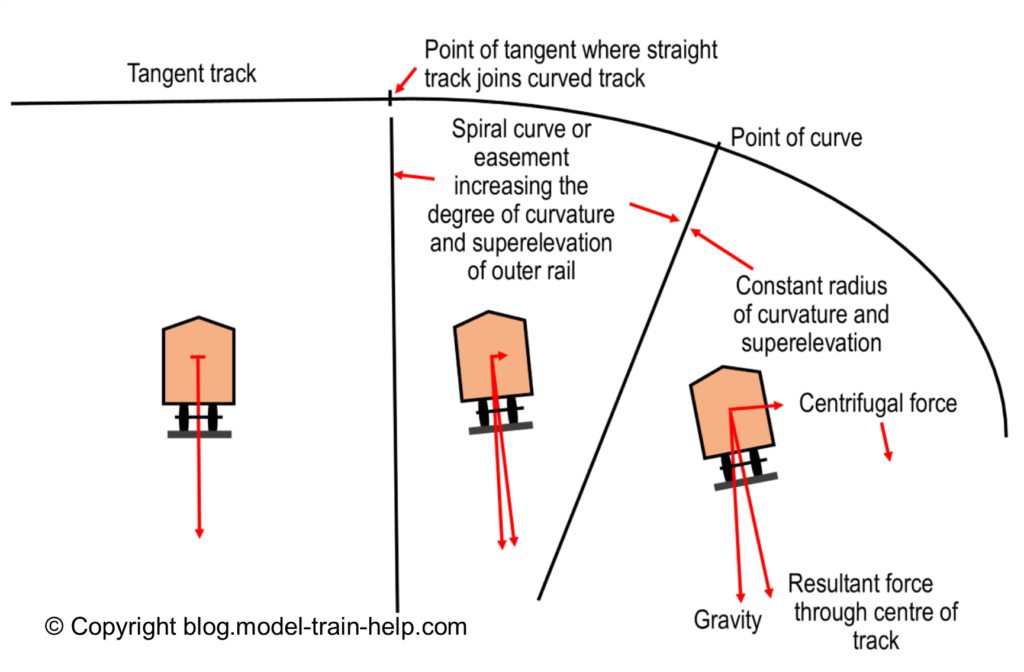Everything on model trains, model railroads, model railways, locomotives, model train layouts, scenery, wiring, DCC and more. Enjoy the world's best hobby... model railroading!
When You Need To Super-Elevate Track For Trains Moving Through A Curve At Speed
Super-elevation on real railroads is when the outer rail of the track is elevated so as to compensate the centrifugal forces that happen when a train passes through a curve at speed. Sound complicated? Let me explain it another way.
Super elevation is basically the difference in elevation (height) between the two edges of railway track (or a road). It is normally seen where the railroad (or road) has a curve; raising the outer rail (or the outer edge of the road) to provide a banked turn. This allows a train (or vehicle on a road) to traverse the curve at a higher speed than would otherwise be possible.
Having such a system neutralizes the effect of lateral force. It provides better load distribution on the two rails and reduces wear and tear of rails and rolling stock. In addition it provides smooth running of trains (and more comfort for passengers), and if designed and operated correctly, should result in fewer derailments.
However, excessive elevation in curves can increase the risk of derailment. When running significantly under balance speed, or operating on over-elevated curves, a significant portion of the vertical weight of the car is transferred to the low rail. The wheels can lift off the higher rail.
The following diagram provides a good perspective on the process of super elevation on a real railroad. Super-elevation should happen gradually as the train proceeds over the length of the track entering the curve (entry easement). Maximum super elevation would be reached when the train is into the curve. The train would then ease back down to level as it comes out of the curve and proceeds along the length of track exiting the curve (exit easement). Following this process, the train is able to stay at speed whilst navigating the entire curve.
 That’s how the system works in the real world, so modeling the same process on a model railroad makes sense as it will add impressive realism to train operations.
That’s how the system works in the real world, so modeling the same process on a model railroad makes sense as it will add impressive realism to train operations.
Unfortunately it is something that is often over-looked at the planning stage, or put in the “too hard basket” during construction. Fact is; the process is not that difficult.
The way most hobbyists tackle it is to use strips of basswood, or something similar, and lay a series of splines along the outer curve edge. Sanding the transition into the super elevation can be somewhat time-consuming, so the following should help to simplify the process.
3 Responses to When You Need To Super-Elevate Track For Trains Moving Through A Curve At Speed
Leave a Reply























Keep in mind that you are working in scale. Even a small change can make a difference.
A 1/8 inch elevation of the outer rail in HO scale would be almost 1/2 foot on an actual RR.
Although super-elevating during construction may be preferable, it can be done after construction. You may not be aware of where the problem areas are until you actually run trains. It is however preferable to add the shims prior to ballasting.
Doug Sassman/says
On the bottom side of of the curve use smaller code rail—–(example)out side rail code 100 inside rail code 80——-
I think the key to addressing any super-elevation concern is the speed one would want to achieve through the curve. Really now, how many layouts are large enough to run trains at high speeds and not look like the typical toy train in the shop window racing around the loop every few seconds?
It’s commonly recognized that, for most layouts, attention to the easements into and out of the curves produces quite an improvement over the typical abrupt entry into or out of a fixed-radius track section. I would suggest spending time on super-elevation only after getting the easements right.